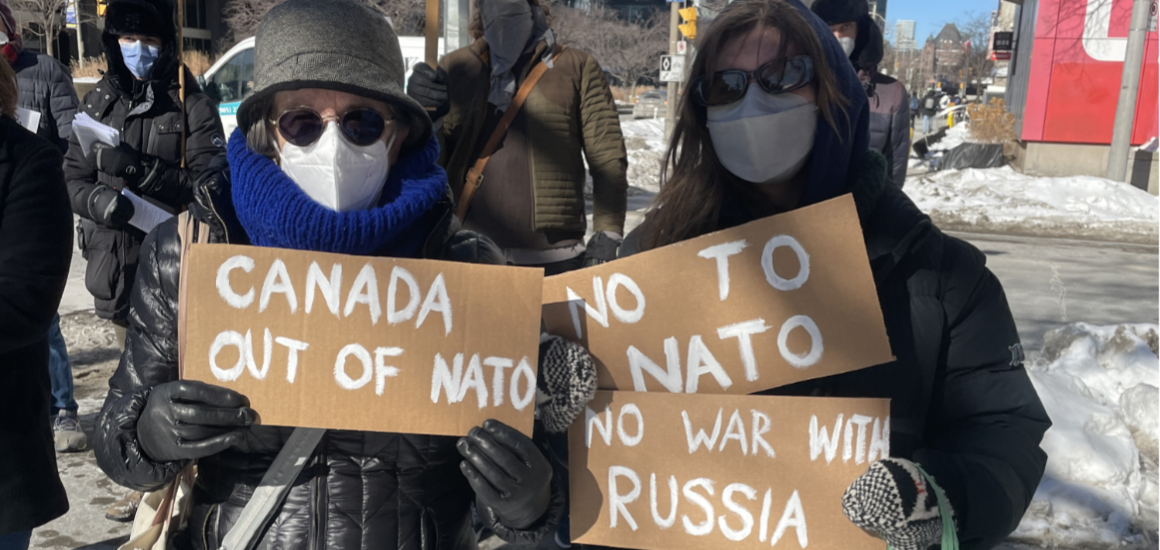Nineteen years ago this month – on February 15, 2003 – an estimated 10 million people from over 600 cities in 60 countries took part in a coordinated day of protest against the looming US-led invasion of Iraq. It has been called the largest anti-war protest in history.
In Canada, rallies were organized in over 80 cities and town, meaning that virtually every single Member of Parliament had a protest in their riding. The numbers were spectacular and bear repeating: 150,000 protesters in Montreal, 80,000 in Toronto, 40,000 in Vancouver, 18,000 in Edmonton, 8,000 in Victoria, 6,000 in Ottawa, 4,000 in Halifax, 1,500 in Chicoutimi,… Across the country, an estimated 400,000 people protested on that one day.
The participation was especially remarkable given the bitterly cold weather. In many communities, protesters faced temperatures of −30 °C or lower. And yet, people poured into the streets to oppose the war and to call upon the Canadian government to stay out of the invasion.
It’s a day that is still celebrated by peace and anti-war activists. But it’s also a day that seems too far in the past, too unique.
Because, while the numbers are remembered, what’s quickly forgotten (or never realized to begin with) is the amount of work that went into the protests.
Almost a full year earlier, in the summer of 2002, the largest peace organizations in English-speaking Canada held a conference on Salt Spring Island. The single biggest issue was the US drive to war on Iraq. Afghanistan had been invaded at the end of the previous year – Canada sent a huge troop deployment there in February 2002 – and it was very clear that the second President George Bush was eager to launch a second Gulf War against Iraq. It was also clear that the issue at the heart of the drive to war was oil.
That last point is vitally important. Even among the peace activists at Salt Spring Island, let alone among the public at large, there were wildly different views about the Iraqi government. But it quickly became clear that the main danger, which had to be opposed, was US aggression. It also became clear that, in order to build an anti-war movement, it was critical to adopt that as the broadest basis of unity.
What followed was months of teach-ins and town halls, petition campaigns, rallies and marches, and lots and lots of local organizing and networking.
Today, 19 years later, we are faced with another drive to war. Like then, there are wildly different views about “the enemy.” Like then, the main danger to be opposed is clearly US aggression. Russia, after all, is moving troops around in its own territory, unlike the US-NATO forces which have stationed troops and weaponry far from their own territory, right up to Russia’s borders. Like then, it is critical to use that broad basis of unity to build an anti-war movement.
But unlike then, the peace movement has not moved into high gear in terms of education, outreach and organizing. Instead, it has been woefully quiet.
The forces opposing one another have conventional weapons with enormous destructive capacity. They also have nuclear arms. This is no time to sit on the sidelines and wait to see where the chips land. The stakes are too huge.
As in February 2003, this is once again the time to take a stand and say “No” to war.
[hr gap=”10″]
Get People’s Voice delivered to your door or inbox!
If you found this article useful, please consider subscribing to People’s Voice.
We are 100% reader-supported, with no corporate or government funding.




